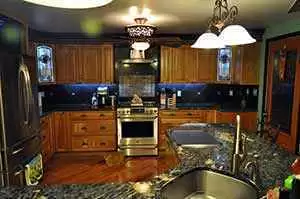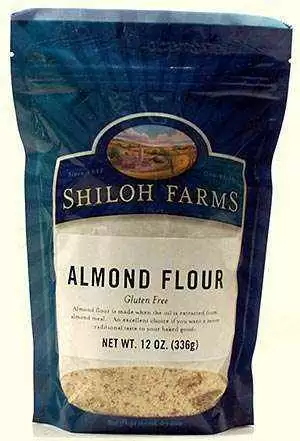Celiac.com 07/19/2013 - Those diagnosed with celiac disease or gluten intolerance need to give their kitchens a thorough inspection and take some precautions to ensure that they will not be exposed to gluten in their homes. Even if you are just cutting gluten out of your diet because of personal preference, reconsidering your food preparation environment is essential if you really want to keep gluten out of your food and avoid allergic reactions or celiac disease symptoms.
 Learning what goes into a gluten-free kitchen takes a bit of research. Since you might overlook certain precautions, consider the following list of ways to ensure your kitchen is gluten-free.
Learning what goes into a gluten-free kitchen takes a bit of research. Since you might overlook certain precautions, consider the following list of ways to ensure your kitchen is gluten-free.
- Thorough cleanings – When you first decide to make your kitchen gluten-free, give your kitchen a good cleaning and set up an appropriate food storage system. If you live by yourself, get rid of food products that contain gluten and wash any dishes or containers that held gluten products. If you share your home with others who will continue to eat gluten-containing products, properly label items and keep gluten-free products separate at all times to avoid cross-contamination. After this initial cleaning, regularly clean any surfaces where you have placed gluten-containing foods before you place gluten-free products on them.
- Toaster – When you have to switch to a gluten-free diet, buy a new toaster and use it only for gluten-free foods. Take care to remind everyone in your home that breads and products that contain gluten are not to be placed in the new toaster.
- Inventory – Obviously, the products on your kitchen shelves are going to have to change dramatically when you begin your gluten-free regime. Take a detailed inventory of what gluten-free products you already have and determine what you need to buy. Do some research to figure out how you are going to meet your nutritional needs and eat the foods you enjoy while still avoiding gluten. Research manufacturers of gluten-free foods and find out where gluten-free products are available locally. Although it might take some effort, you should be able to find a gluten-free equivalent for all of your favorite foods.
- Education – Now that you are eating gluten-free, some grains are available to enjoy and some must be avoided. Familiarize yourself with what you can and can't eat. Examples of gluten-free grains include amaranth, millet, oats, corn, and buckwheat. Grains to avoid include wheat, barley, and rye.
- Gluten-free mixes – A variety of gluten-free mixes are available that allow you to prepare your own baked products. Preparing baked goods such as breads and cakes from gluten-free mixes is a good introduction into the world of gluten-free cuisine.
- Cookbooks – Unfortunately, you may have to toss out many of the recipes in your old cookbooks, so buy a new cookbook that contains a variety of gluten-free recipes. Buy at least one and browse through it to get an idea of what goes into a gluten-free kitchen.
Celiac.com Sponsor (A12):
Once you have set up your gluten-free kitchen, you will be able to once again cook, eat, and bake to your heart's content without worrying about your celiac disease or gluten intolerance. Part of what goes into a gluten-free kitchen is vigilance and attention to detail. Keep yourself as healthy as possible by doing everything you can to keep gluten out of your foods and out of your body.







Recommended Comments